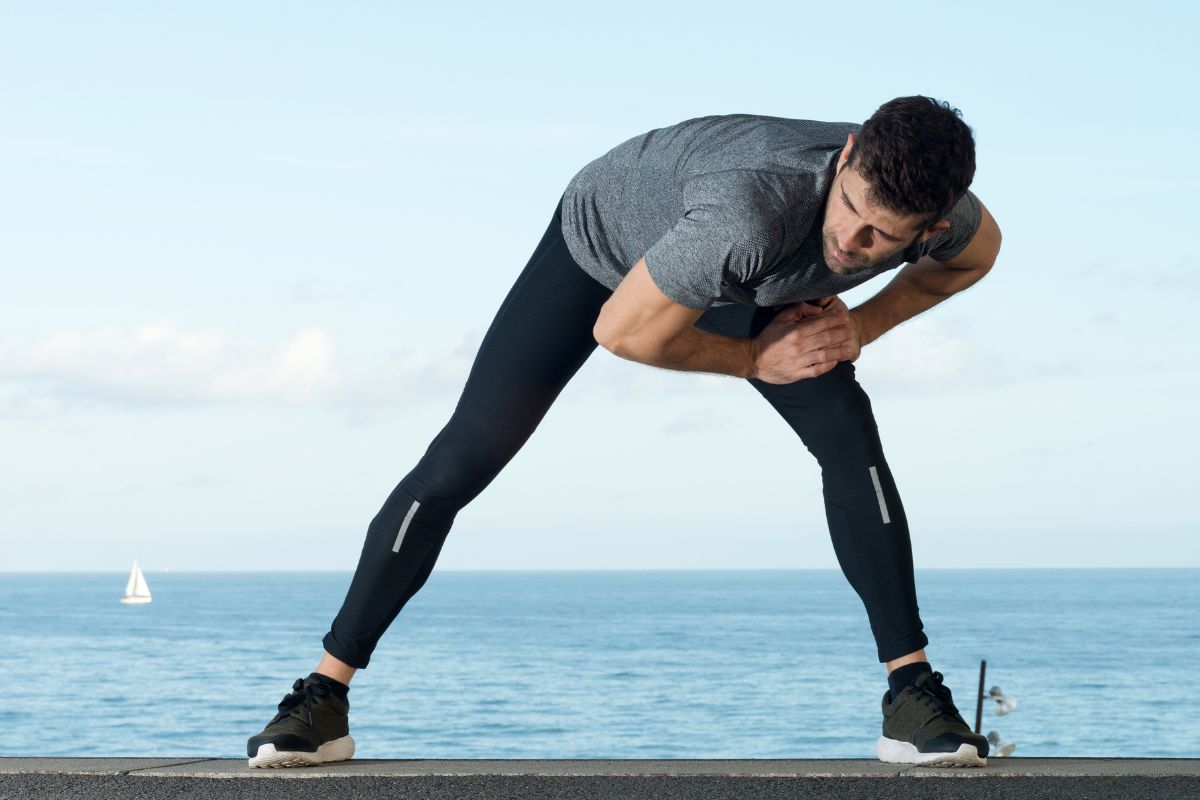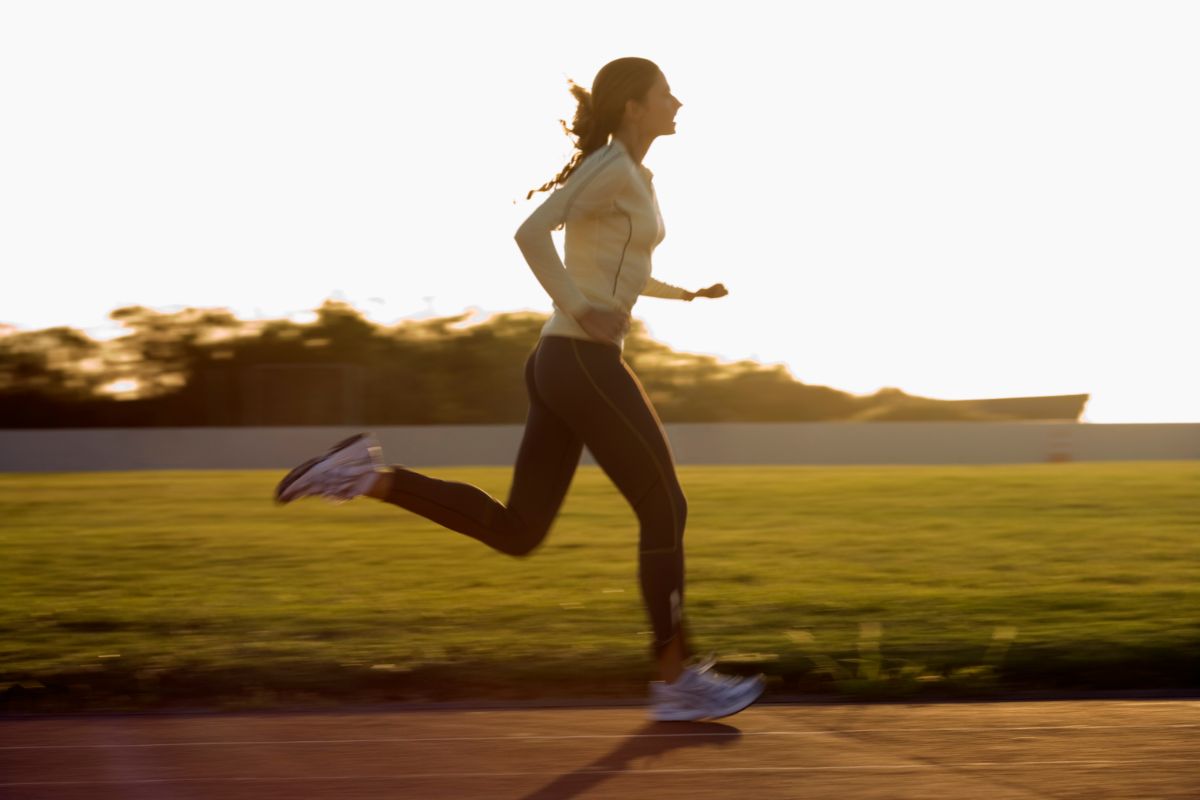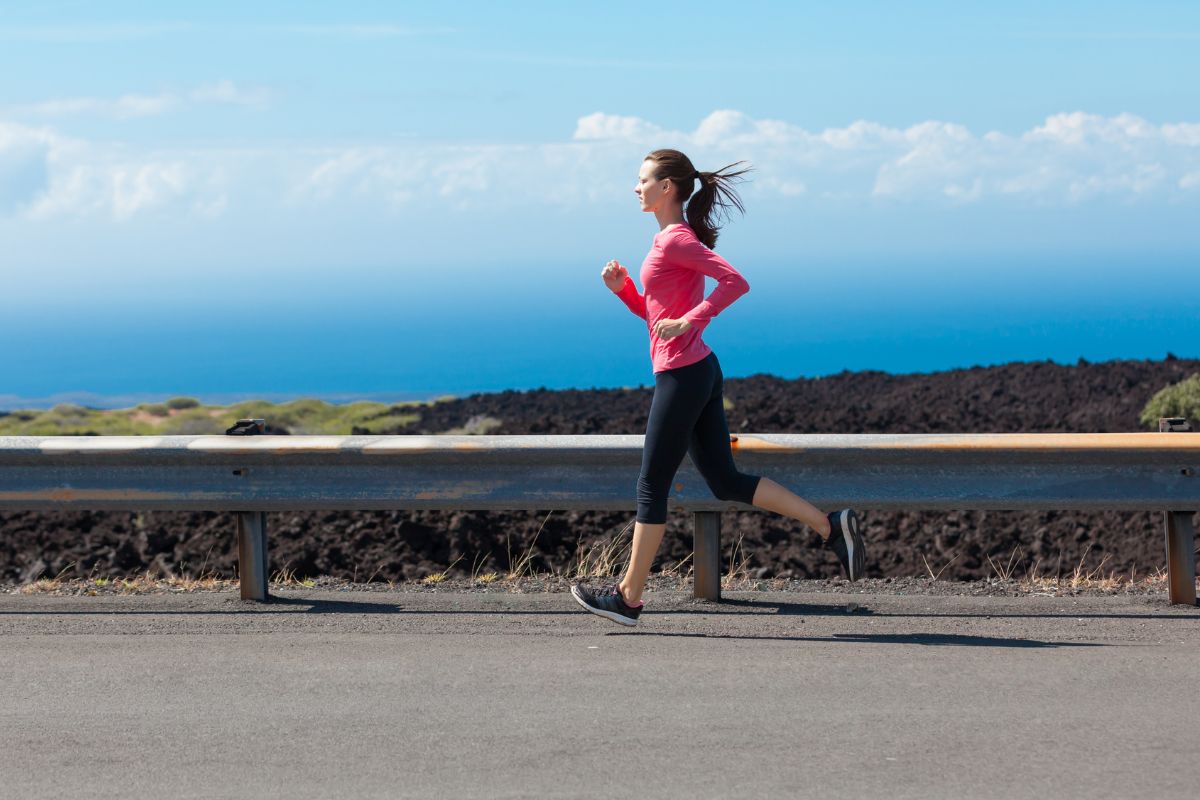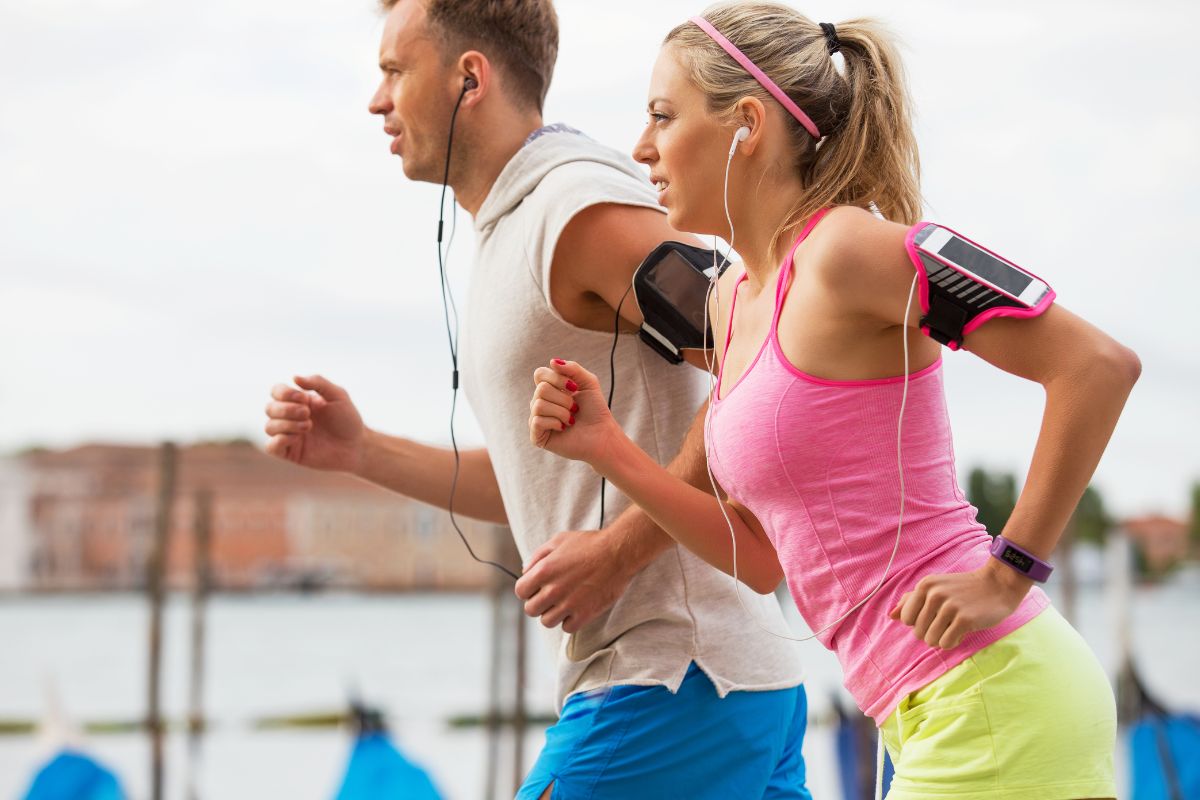Understanding which muscles are worked when running isn’t just important for strengthening these muscles, but knowing which muscles to stretch, as well as rest, after you run!

Despite what many people might think, running involves more muscle activation than the leg muscles alone – it’s a full-body exercise if you think about it, also requiring core stability and upper-body momentum.
You might be wondering which muscles running works from a muscle-building perspective, for stretching and recovery purposes, or simply out of curiosity!
Whichever it is, though, this guide has everything you need to know.
Muscles Worked When Running
Most of the muscle activation that happens during running involves the lower-body muscles.
These include the quadriceps, calves, and hamstrings; the gluteus and hip flexor muscles; plus the erector spinae muscles of the lumbar spine.
The core is another area that’s involved, which includes the abdominal muscles and obliques.
Last but not least, the deltoid muscles and pectoral muscles of the chest and shoulders – which many don’t realize are also activated when running!
So, running involves more working muscles than you might think.
This also means it’s important to stretch all of these muscles before and after running, as well as make sure to give these muscles enough rest and recovery between your runs.
Does Running Build Muscle?
The next question worth talking about—and a topic that’s often debated—is whether running builds muscle.
The straight answer is that yes, running can build muscle – particularly in the quadriceps (quads), calves, and hamstrings, since these are the primary muscles activated when running.
When it comes to incline runs (running uphill) especially, you can expect to grow larger calves and quadriceps to a certain degree.
Despite that, running is more beneficial for building lower-body strength and endurance than it is for building large, visible muscles.
This is simply because running does not put the leg muscles under enough resistance, or weight load, to break down muscle tissue.
So, overall, running can build muscle – just don’t expect to achieve the legs of a bodybuilder by running, if that’s your goal!
Do Big Muscles Affect Running?

Another topic that’s widely talked about is whether big muscles affect running performance or not.
A strong upper body can help with sprinting, since stronger momentum will drive the body forwards faster.
Stronger leg muscles can also help for running faster or running uphill, simply because more muscle can provide more power.
Despite that, more muscle requires more oxygen to function.
So, large muscles generally don’t provide benefits when running long distances – such as half marathons, marathons, and ultramarathons.
On the other hand, though, having large, strong muscles can benefit sprinting.
These are the reasons you’ll often find that marathon runners don’t have large muscles, but sprinters do!
How To Run With Good Form?
To strengthen the above muscles while running, it’s important to run with good form.
This won’t only improve your performance (speed and endurance), but also help to reduce the risk of injuries.
For optimal running form, it’s important to:
- Land between the heel and ball of your foot with each footfall (using the ball of your foot to spring into the next stride)
- Position your knee above each foot when landing
- Relax your shoulders and loosen your arms and hands
- Swing your arms at each side no more than 90 degrees
- Maintain an engaged core
- Keep a level chin while looking ahead
This might sound like a lot to think about if you’re a beginner, but by keeping these in mind, good running form will gradually become natural over time!
How To Stretch Before And After Running?

Now that you understand which muscles running works, as well as how to run with good form, it’s worth knowing how to properly stretch before and after running – which applies to any short or long distance!
Stretching will increase blood flow and prepare the muscles (and joints) for any challenging or physically stressful exercise you’re about to perform.
And just like running with good form, stretching will also improve running performance and reduce the risk of injuries.
Before running, perform dynamic (moving) stretches, such as walking lunges, heel and calf raises, and toe taps.
After running, static stretches are more beneficial – stretches that involve holding a position for time.
These can include quad stretches, standing wall calf stretches, and seated hamstring stretches.
You can never stretch enough before or after running, so make sure to never rush through your stretching routine!
The Wider Benefits Of Running
Muscle activation and muscle growth aside, there are wider benefits to running done as a regular exercise.
And the benefits aren’t just physical, but also mental.
Running will improve cardiovascular (heart and lung) health, breathing, tendon and ligament strength, bones, stamina and endurance, and the active burning of calories for faster weight loss.
As for the mental benefits, running can improve cognitive functions (focus and memory retention), as well as improve your general mood—including feelings of happiness and reduced stress—through the natural release of endorphins, dopamine, and serotonin.
If you have ever heard the term “runner’s high”, it’s a real thing, caused by these chemical reactions.
So, if you needed more reasons to put your running shoes on in the morning, there they are!
Final Word
Looking for the short answer? The muscles worked when running include the quadriceps, calves, hamstrings, gluteus muscles, hip flexor muscles, erector spinae muscles, abdominal muscles, obliques, deltoids, and pectoral muscles.
But while these are the overall muscles activated during running, the primary muscles worked are the lower-body muscles, particularly the quads, calves, hamstrings, and glutes (the main leg and butt muscles), as well as the abdominal muscles and obliques.
So, there are more muscles activated when running than most people think – and that doesn’t include the ligaments, tendons, and bones, which also get stronger through running.
To wrap up, just remember that for optimal running performance, reduced risk of injuries, and fast recovery, it’s important to stretch these muscles before and after running. You’ll definitely thank yourself later!
- Can Dogs Run Faster Than Humans? (Running With Your Furry Friend) - October 4, 2022
- 10 Doggie Fun Runs You Will Love [Ultimate Guide] - October 4, 2022
- What Are Division Results In Running? - October 4, 2022








